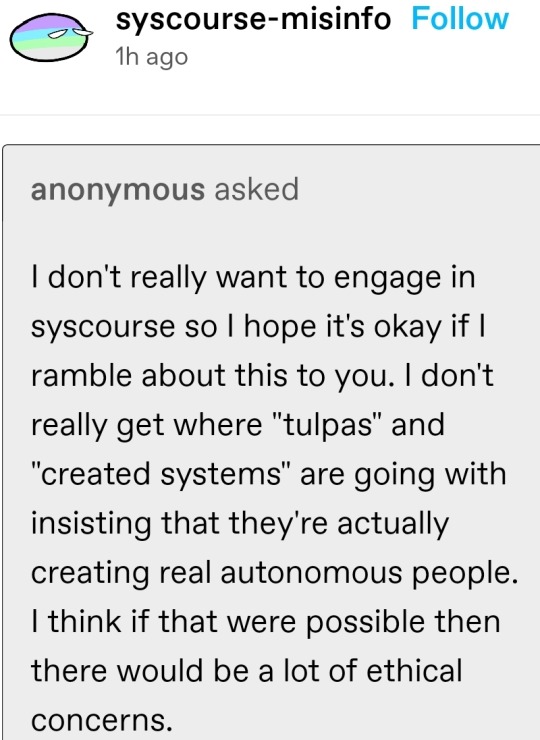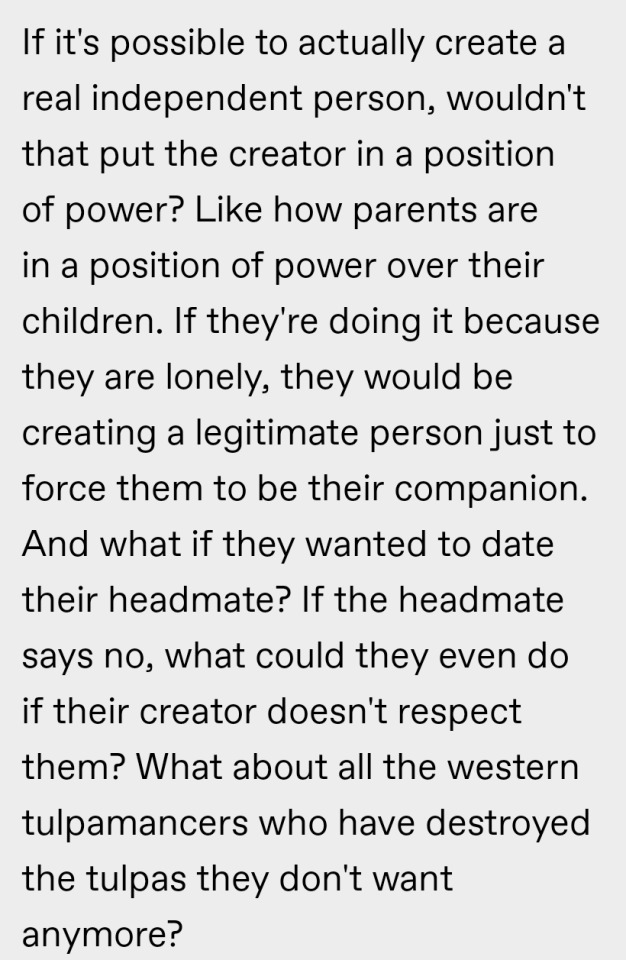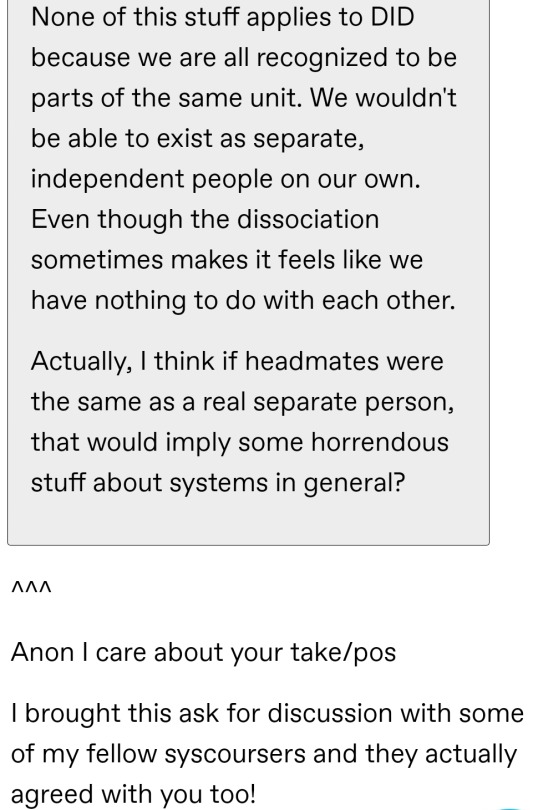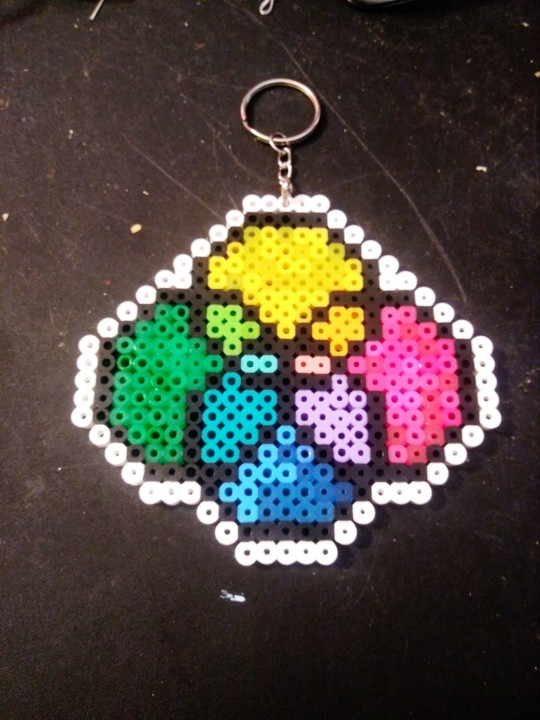Text
Hello everyone!
These Palestinian girls are trying to survive amidst a genocide and reunite with their father. They are at approximately 1/3rd of their goal. My goal is to help them reach $30,000 soon, and you can help me!
Remember the days of MOGAI monsters? Monsters/creatures made with mogai flag pallets? For every $7 or more donation to this campaign, I will draw a mogai monster with a flag pallet of your choice and post it here! Just donate, screenshot your receipt (you can block out your name) and send it to me in DMs!
For every donation of $19 or more, I will make a personality and backstory for the creature. You can pick the name!
If you can't donate you can still help by reblogging this post! Together we can make a difference. Together we can get these sisters reunited with their father.
Free Palestine 🇵🇸❤️🍉🇵🇸🖤💚🤍
220 notes
·
View notes
Text
This petition is by Rashida Tlaib, a Palestinian American congresswoman. Please sign to urge Biden to stop sending aid and weapons to Israel.
There is a donation request afterwards but the signature itself just requires name email and zip. There is also an option to sign from outside the US and select your country. The petition is a little over 33,000 signatures away from its goal as of posting.
Please let me know if any of this information is incorrect or misleading. Please feel free to add other verified petitions.
4K notes
·
View notes
Text
Petition for Canada to stop arming Israel
In case you haven’t seen it yet: here’s a petition for Canada to stop arming Israel. https://www.ourcommons.ca/petitions/en/Petition/Sign/e-4745
34K notes
·
View notes
Note
So whenever I'm trying to talk to Edgar (my tulpa) I get a response but I feel like I have to focus a lot harder on what he's saying so I'm not sure if it's me or if it's him. Is there a way to tell? Any tips?
This is a really good question!
Most systems experience "fuzzyness" from time to time where you aren't sure whose thoughts are whose and that is perfectly normal! It doesn't matter how long you've been plural, these things can still happen.
-Rogerina
In newer systems, this can be more common. You can try, on a day where you have some time and privacy, talking with Edgar for an extended period of time. Over time, the conversation may get easier to follow from both sides. It may also be a good idea to talk over writing or text for a bit, starting new lines when you think you're switching.
Good luck!
-Rudolph
5 notes
·
View notes
Text
I'm selling buttons I made from bulk pokemon cards! I was going to sell them on etsy but the support people haven't gotten back to me yet.
10 notes
·
View notes
Note
From some random post we saw while doomscrolling through syscourse(which, are you alright? You're the top poster, which isn't really something to strive for in one of the most hate and rage driven tags systems can find themselves in on tumblr... should take a mental health break every once in a while):
Because, frankly, the anti-tulpa narrative was manufactured to shutdown created systems, and present bigotry in a way that appeared progressive. People aren't actually against words from other languages and religions being used in new ways. They're against these words being used by endogenic systems.
As a pro-endo mixed/POC system who has spent hours upon hours trying to understand the tulpa language discourse argument- I'm honestly really fucking hurt by this hugely inaccurate assumption. I don't see how we're trying to shut down created systems, what i see is trying to educate and steer people away from a term that was created through ignorance, racism [albeit not forwardly malicious], and cultural appropriation.
Tulpa creation bears no connection to Tibetan Buddhism anymore —not that it ever really did, given this exact phenomenon is not actually mentioned to exist, ever, by, i forgot the name of the person who invented the term but i know she was a) white and b) racist in ways outside of this — but is still touted around as being connected and part of that spiritual practice.
It's not about "we dont want endos using this term." It's that we want the term to stop being used ALTOGETHER. We personally have witnessed traumagenic systems exploring creating headmates, and we have steered them away from using tulpa language in favor of "parogenic" as a term.
It saddens us that you can just so brazenly dismiss it as a whole as shutting down created systems while so much else is going on that you're choosing to ignore.
You have a good heart - do more research into why people are saying what they are and don't just dismiss them like that. Please don't speak over those people who are a part of the culture being appropriated, simply because of refusal to change.
And yes, we asked this on anon not out of cowardice, but because we'd really rather not start getting a bunch of death threats on our main blog.
-Enzo
Okay, let's try a thought experiment. Imagine for a moment that there are two universes. In one universe, the anti-tulpa narrative begins and is popularized because it's harmful to Tibetan Buddhists as an ethnoreligious group.
In the other, the anti-tulpa narrative is concocted and pushed heavily by anti-endos as a way of delegitimizing one of the strongest and most well-researched endogenic communities.
What would you say the differences would be between these two universes?
Personally, I think if one were to enter the first universe, you would find several things.
Anti-tulpa sentiment probably would have begun in the early 2000s as the internet was coming into more sidespread use and shows like Supernatural and X-Files would use tulpas as horror monsters.
Similar to above, once backlash started, it would be hitting all presentations of tulpas, including in creepypastas and its use by the SCP Foundation.
Much of the backlash would be coming from members of the Tibetan Buddhist community, including at least some spiritual leaders because yes, religions have hierarchies of leadership.
Well, what about the second universe? What would we expect that universe to look like? Personally, I would expect the following:
There would be zero trace of anyone ever taking issue with the tulpas in shows like Supernatural or X-Files prior to tulpamancy being formed.
All backlash would be focused solely on tulpamancers. Nobody ever would mention the SCP Foundation, Mandella Catalogue or creepypastas about tulpas.
Most of the anti-tulpa backlash would be coming from system circles, and would be heavily pushed by anti-endos. While you might be able to fund a small handful of Tibetan Buddhists who have been convinced by anti-endo rhetoric that it's bad, there would be no spiritual leaders getting involved and most Tibetan Buddhists you ask outside of system spaces wouldn't care.
Which of these two universes do you feel most resembles our own?
Before you answer, here's a fun thread comparing the differences in people's opinions on r/systemscringe vs those on r/Buddhism
When r/systemscringe is pushing a narrative that the word is appropriation while actual Buddhist communities on the same site shrug their shoulders and don't care, this should send up immediate red flags as to the legitimacy of this whole controversy, and which groups are actually interest in pushing it.
Now, I am not suggesting that none of the very small handful of actual Tibetan Buddhists who have taken issues with the practice don't legitimately feel as they claim to.
The problem with propaganda is that it's often very good at manipulating people's emotions. If it couldn't do that, it wouldn't be effective.
We've seen this with similar anti-endo smears, like the ones claiming "system hopping" was appropriated from RAMCOA systems. And sure enough, despite its use in the plural community predating any RAMCOA connection by a full 16 years, this claim still persisted. And some RAMCOA systems were even manipulated by these lies and convinced endogenic systems were stealing terms from their community.
We actually see this same tactic over and over again.
We see it with "system hopping" which they claim was stolen from RAMCOA systems. We see it with "sysmed," which they claim is stolen from the LGBT community. We see this with the very concept of plurality itself.
The fact of the matter is that this has become a core manipulation tactic in the anti-endo playbook, designed to sew division.
35 notes
·
View notes
Text
Tulpa Tip #7
You know how sometimes you throw a party and the people you invite invite their friends too? Or sometimes, people hear about the party on their own and invite themselves?
This chapter deals with two distinct scenarios: tulpas invited by other tulpas, and headmates that form on their own after you've created a tulpa.
Imagine your head is the party and your tulpa is the invited guest. Then, your tulpa misses somebody and starts either trying to invite them by themself or begging you to do it nonstop until you do. *Cough cough Rudolph cough cough*
Fortunately, when this happened in our case it was a pretty easy transition for us to make and it went well, but that's not always the case. System changes can be distressing for everyone involved and that's one of the many reasons you should never make a tulpa lightly. It's like having a kid. Be sure you want one before you make one because they don't just go away. Sometimes, it may be necessary to refuse. If your tulpa is asking for a person who would negatively impact them or you, it's very important to calmly and firmly tell them no and explain why. There is no guarantee this will go well, but it is important to try.
Another thing that we've experienced in the near-decade since Rudolph formed: sometimes people just appear on their own. Our system has changed many times. New tulpas have been formed, tulpas have started going by new names, and while we can't trace back to the exact moment of everyone's forming, most of us can trace a chain of events that led to our existence in the system. This is true for the ones we made on purpose, and for the ones we didn't.
Some of our headmates have formed with no planning or aforethought. All three have formed in times of great stress and turmoil. They are quoigenic because nobody has any idea where they came from. This can happen in any system, including a tulpa system apparently. We still call ourselves a tulpa system even though we're technically mixed origin, because out of 16 of us, 12 are tulpas. The rest? Uhhhhhhhh, idk, I just work here.
So, what do you do when this happens? All we can really do is roll with it. We've been very lucky so far and not had any major problems, but that isn't to say there haven't been bumps in the road.
For example, one of our oldest headmates, who formed in about 2017, is a fictive from a video game. He is an antagonist. One of our newest headmates, who formed on her own, is a protagonist from that series and she HATED him at first. In fact, she went around trying to "warn" the rest of us against him. Obviously, it didn't work. I mean, he's been here for about seven years and his main job is making the body brush its teeth and go to bed on time. We trust him. But she didn't. In her case, she just needed time to get used to things. They needed to talk things through. It's working out now between them.
TLDR: Communication is key. If your tulpa starts to want other people around, talk it out. If you get a new headmate and nobody knows where they came from, talk to them. If two headmates are having conflict, make sure everyone involved understands why and will do what's right for themself and the system.
Obviously our advice isn't one-size fits all! Don't make a tulpa if you're not sure you want one.
18 notes
·
View notes
Note
So I have Anphantasia but I want to create a system. Do you have any tips for me?
We certainly do!
Tips #1 and #2 don't really require visualization!
The app Mindly is a mind-mapping app that I've seen other systems use for head-space building! The fun part about this is that no visualization is required! Mindly can let you map out your headspace in the app if you want to do that!
You can also, later in the process, get your tulpa some mundane items like a pen, journal, stickers, a tumblr blog, etc. to help flesh them out!
Hope this helps!
3 notes
·
View notes
Text
I haven't seen people explicitly talk about this before, but there's a couple different perspectives one can have in their innerworld. Some have a first-person POV, and see the innerworld as if through their own eyes, like one does in the outer world. Some have a third-person POV, and see the innerworld through an external perspective that's fixed to their form, like one sees their player character and surroundings in many video games. There are even some who don't have a specific form to see through or around in any way, and simply "see" the innerworld as needed, in ways hard to describe but that may be comparable to a third-person omniscient POV. There's no "right" or "wrong" way to envision or see your innerworld. It's just that most guides for and discussion about it center around a first-person perspective, which seems to be the most common perspective. Don't worry if your perspective falls outside of that, and don't worry if your system has a mix of perspectives. It's perfectly normal and alright.
294 notes
·
View notes
Text
Tulpa Tip #6, The Inner World
Tulpa Tip #6, The Inner World
An inner world is sometimes also called a headspace or a wonderland. Anyone can have an inner world. Systems of all types have inner worlds, but they can be especially helpful for tulpa systems! Inner worlds are exactly what they sound like,-; they are worlds inside of your mind in which the system can live. The inner world is usually where an alter's physical appearance comes from. In my system, people go here when they're not fronting. I'm almost always fronting but I can visit our inner world through meditation. Every system's inner world is different. Ours is a big house in a field. I've seen others who's inner worlds are entire countries, forests, deserts, etc!
The nifty thing about our inner world is that everyone has their own room. They can decorate however they want to. We also put items around the house for specific people. For example, Rogerina has her own bedroom. Her room is very pink and modern-looking with figurines on the shelves, a bookcase, a desk, and a plushie net hanging from the ceiling. She has her music stuff in one corner. Across the hall from her room, there's a gaming room which she and other system members like Flick and Yuga use quite frequently!
We drew a floor plan of our inner world when we decided that everyone needed their own room. Having your tulpa describe their own space, whether it is a bedroom, a boat, a house, a car, or anything else, can really help you get to know their personality. For example, I didn't realize how important it would be to Ganon that we have a big kitchen in our house.
The other neat thing about inner worlds is that they can change. Some systems have fluid inner worlds that never look quite the same. This is helpful, especially while your tulpa is still developing because it can let them figure out what they want at their own pace.
If you are struggling to create your inner world, take a step back. You don't have to do it all at once. In fact, you really can't do it all at once. It's a big project. Everyone in the system should help. Let things come to you naturally! Maybe try some meditation!
If you're still struggling and you're starting to get frustrated, here are some other resources to help!
www.tumblr.com/orange-orchard-system/665955238376849408/disclaimer-that-i-dont-know-if-this-will-work-for
pluralpedia.org/w/Headspace
www.tumblr.com/sophieinwonderland/680232074264870912/all-the-resources-youll-need-to-build-your-own
12 notes
·
View notes
Text
Really doubling all the way down on the depersoning in all the worst ways.

Yeah. I think there are...

Initially, the creators are in a position of power, sure. Power tends to balance out over time as tulpas become more developed.
Although, with the parent and child comparison in mind, you wouldn't say it's unethical for people to create children just because there's going to be an unequal power dynamic. And children are often created for somewhat selfish reasons, ranging from the parents wanting to leave a legacy to them wanting to experience the joys of parenthood.
I rather like the Golden Rule of Tulpamancy mentioned in the tulpanomicon.
Don’t create a tulpa for reasons you would be upset about being created for.
And generally speaking, yeah, forced dissipation is seen as highly immoral within the tulpa community. Some tulpas have even been traumatized by hosts trying to dissipate them.
Although we don't believe dissipation is an actual thing. I believe once a tulpa is created, it's in the brain forever. But it can go dormant, which is why I don't think consensual "dissipation" is harmful. It's just choosing to go into a long sleep.
The thing is, the tulpa community has grappled with these ethical quandaries for a while. This isn't exactly new to us.

So, let me see if I'm understanding this correctly... In their minds, the issue with the personhood philosophy is that they have to think about ethics of how they treat their headmates?
"None of [the ethical considerations] apply to DID systems because DID systems are recognized to be parts of the same unit."
Like, their problem doesn't seem to actually be that tulpamancers sometimes make tulpas and later dissipate them... but that this forced dissipation would be considered unethical because we're people?
The parts approach is better for the anon because then it would be ethical for me to be dissipated by my host since I'm not an actual person, but we're all just part of one? Is... is that what they're saying here? Please tell me that I'm misinterpreting this, because frankly, this is one of the most harmful and toxic takes I've seen.
I will never say that parts language is bad. There are obviously plenty of systems who have benefitted from it. But if you're using parts language specifically because you want to dodge any "ethical concerns" over how you treat your headmates and give you a free pass, ethically speaking, to harm them in all the ways this describes tulpas being potentially harmed... that's a terrifying position.
And the fact that apparently so many in these "neutral" or "anti-misinformation" circles support this position makes it so much worse.
REGARDLESS OF SYSTEM TYPE, HARMING HEADMATES SHOULD BE CONSIDERED UNETHICAL!
(Note: Just remember that what constitutes harm for headmates varies from system to system. For example, physical harm in inner worlds can be extremely traumatizing for some, but literally nothing to others.)
Do you want to know why the "people" philosophy works for systems who use it?
It's BECAUSE of those ethical considerations you want to avoid. Because we see care about each other and view hurting each other as being every bit as immoral as hurting someone outside of the system.
81 notes
·
View notes
Text










15% off and free shipping in our store right now!!! ^ _ ^ we need help getting moved into our new apartment!!
if you're interested in helping, we are a disabled trans person who is recovering from housing instability and homelessness. i currently only make $245/month right now while im waiting for my disability payments. you can check out my store here:
618 notes
·
View notes
Note
Oh, Yukon ! I didn't know you were studying philosophy, that's amazing ! If my question isn't too personal, may I ask what helped you choosing it ? Cause I still ask myself what I want to do later... I'm thinking about psychology or maybe becoming a teacher ! (Aaand...I apologise for my kinda bad English. 😭)
Your English is great!
I took a little half-year philosophy course in high school and really enjoyed it but I started majoring in Psych when I hit university. The thing is, I didn't find it half as interesting.
I started philosophy again last year and as soon as I finished my first intro class I realized that this is what I want to do. This is what I'm passionate about. This is what I love learning about!
Thank you 💜💜💜
2 notes
·
View notes
Note
OMG, is the "I think therefore I am." on your header a reference to the fact you post about thoughtforms ? I can't stop thinking about it now. 😭
The host is a philosophy major and we all thought that quote from Rene Descartes fit our blog too well NOT to make it the header XD 😭 So glad someone picked up on it! Yes, that is the reason lmaoooo
3 notes
·
View notes
Text
Likely Origin of “Tulpamancy is Cultural Appropriation”
I would’ve made this post earlier, but there’s been a flow of positivity posts and anon asks lately, so I didn’t feel as pressured to make a post that will likely be fairly long. I’m sorry in advance, but I feel like this needs to be discussed on Tumblr with the rampant spread of this disinformation, so bear with me.
Let’s get started.
Afficher davantage
325 notes
·
View notes
Text
Tulpa Info!
Tulpa systems are systems that are created voluntarily! There are many ways to do this, and each tulpa system forms a little differently! Tulpa systems come in all shapes and sizes, just like other systems. It's also possible to have tulpas in a system that is majorly made up of another origin (traumagenic, endogenic, etc.)
Related terms are thoughtform, parogenic, and willogenic! The line between thoughtform and tulpa as terms is blurry. Some insist that they're completely different while some believe they're two words for pretty much the same thing. Parogenic is a "genic" label for any created system! (Created system refers to a voluntary system.) Willogenic is a much newer word and refers to a system "willed into existence" which is a similar concept! It is not intrinsically related to tulpamancy but the terms are too similar for us not to include them here!
Tulpamancy is the word used for creating tulpas. Tulpas can be formed in otherwise involuntary systems such as endogenic systems, traumagenic systems, etc. Tulpas are often created to deal with mental health issues or loneliness and most people who have them report improvement in those areas! There are many reasons that tulpas form. It is also possible to form them voluntarily but not "on purpose" per say! Our system was formed voluntarily but it formed waaaay before I (the host) even knew what a system was much less what a tulpa was.
Some people mistakenly believe "tulpa" refers to the Buddhist spiritual word "tulpa" in this context but the two are fundamentally different. Some essays on this can be found here and here! (They word this stuff so much better than I can.)
Currently we have been able to find one article on tulpamancy.
Tulpa.org and Tulpa.info are great places to find more information!

Tulpa flag by cityuniverse

Parogenic flag by not-your-introsource

Thoughtform flag by cluster-brains

Willogenic flag by extranth!
10 notes
·
View notes
Text
sorry professor I could not do this assignment. there are fictional characters in my head.
54K notes
·
View notes